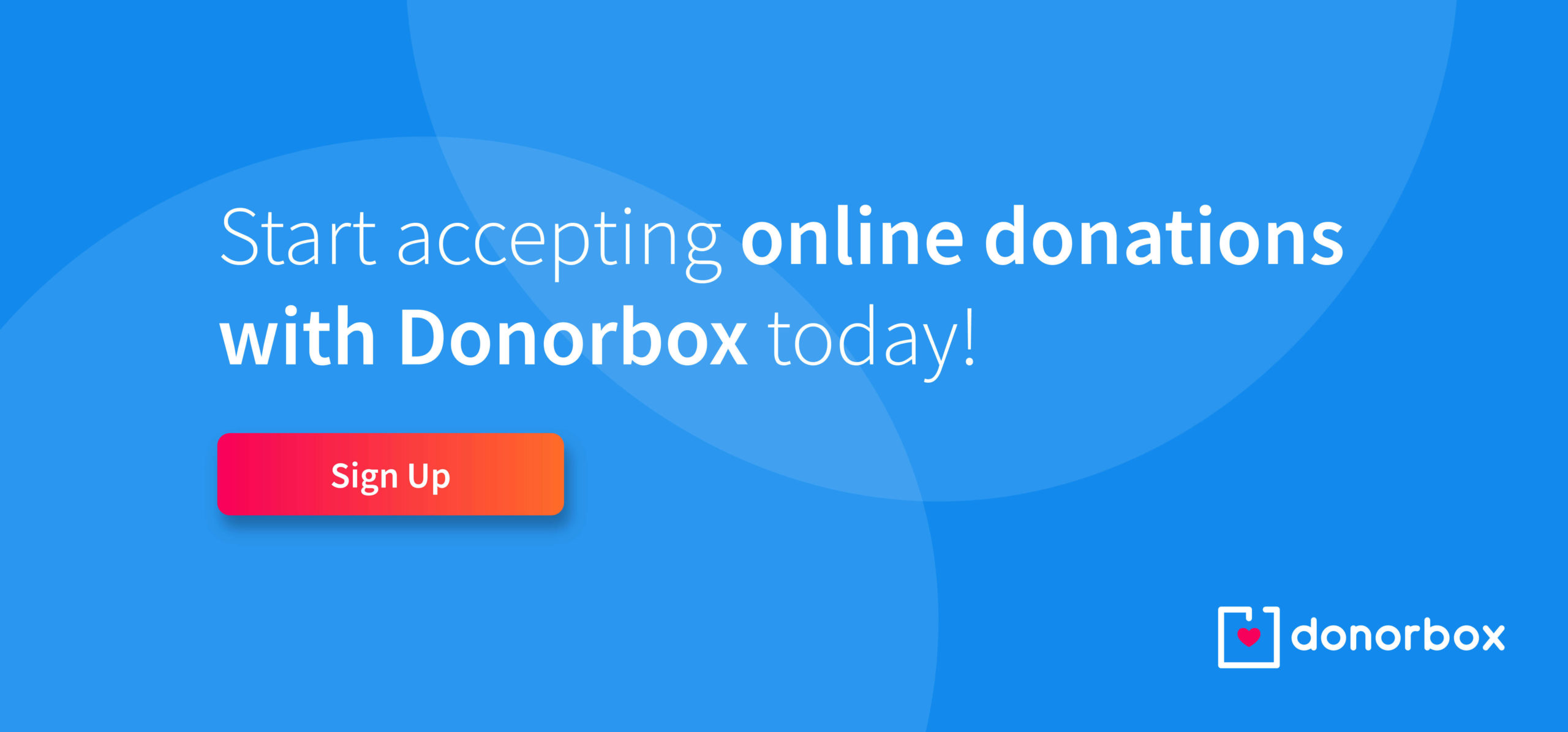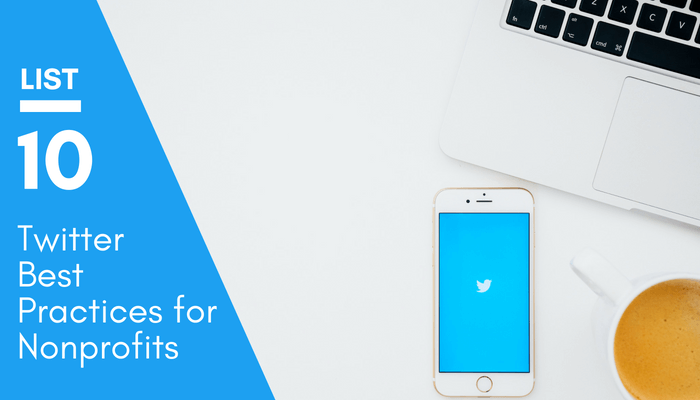Platforms like Facebook, Instagram, YouTube, and LinkedIn all have their fair share of benefits when it comes to nonprofit marketing. However, what Twitter brings to the table is the incredible speed with which information and news spread, as well as an opportunity for real-time conversation between multiple users.
Twitter is the best platform for an ongoing and authentic conversation with your supporters and donors. It’s also a great platform for establishing your expertise and your position as a thought leader in your area of work.
If you’re producing content like videos, blog posts, and infographics, Twitter can help amplify the distribution of it.
Twitter is the best social media platform to inform your audience, mobilize supporters, and interact with your audience. This means it helps build trust and a sense of genuine connection, which is what today’s prospective donors and supporters want.
If you’re not familiar with it, Twitter is essentially a micro-blogging site, where people communicate in short messages called tweets. Twitter limits the tweet length. Every tweet is limited to 280 characters or less. This makes everything very scan-friendly and easy to browse, so it’s ideal for our attention-deficit world. However, this very particular way of communication has made it challenging to write in a compelling way on Twitter.
If you’ve ever felt overwhelmed by running a successful nonprofit Twitter account, we’ve got you covered. Here are our top tips and best practices:
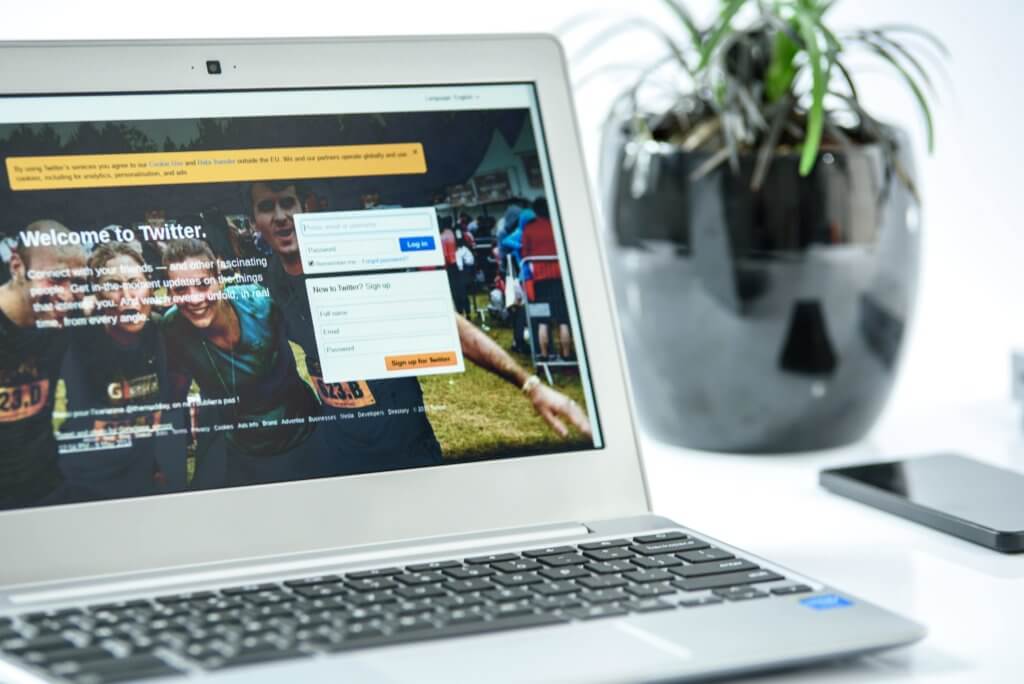
Nonprofit Twitter Strategy – Best Practices
1. Share relevant content that adds value.
Now, this is almost a universal rule of nonprofit marketing. Wherever it is that you share content, it should be relevant to your mission and your audience, and it should add value.
Same goes for Twitter. Don’t just tweet for the sake of it.
It can be very tempting to do so, because tweets are so short and seem more ‘low-stake’ than, say, blog posts, for example. However, every single tweet reflects on your organization.
When deciding which content to share, prioritize content related to your cause.
@amnesty (Amnesty International) is consistently retweeted. Below is an example of a video they shared about a young woman talking about the situation in Afghanistan. They shared unique, interesting content. This is generally much more successful on Twitter than constantly bombarding your followers with fundraising asks and self-promotional tweets.
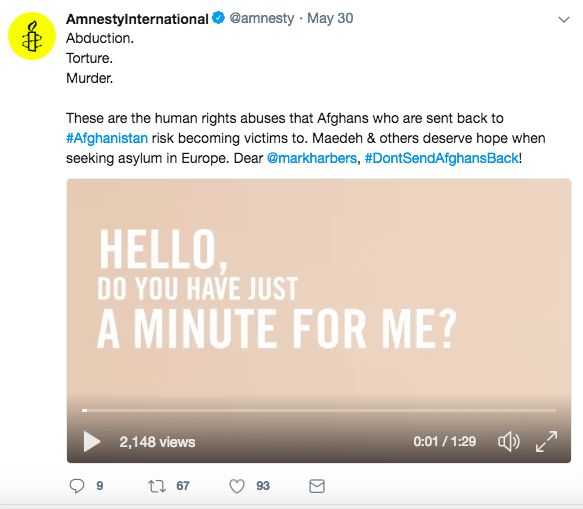
2. Be careful with your words.
The 280 character limit forces you to choose your words carefully. Punctuate properly and don’t use abbreviations (e.g. thx). Draft and then rewrite your tweet, even a couple of times if needed, to make it as concise as possible and to make sure it’s sending exactly the message you want to send.
Include a link (URL/website address) in tweets wherever possible, so that people can read more about an issue, and to promote your own website’s content.
Don’t overload your tweet or make it look messy. Write complete sentences and end a tweet in either a period or a colon before the link. It’s been shown that those types of tweets are retweeted more often and thus tend to have higher click-through rates.
@WFP World Food Programme, as seen in the example below, crafted a clear and compelling message that reflects their mission and has a clear call to action.

3. Don’t forget about hashtags.
Twitter is the platform that popularised hashtags, so don’t forget to include at least one hashtag in your tweets.
Be careful, however, not to overdo it. For example, using five hashtags in one tweet is not recommended. One to three hashtags is preferable. Engagement rates drop when you use more than two hashtags.
Using hashtags is especially important if you’re looking to engage with people who care about your cause, with influencers, with other organizations, with journalists, and if you seek to be present in the conversation about your mission – which you should!
It’s very likely that you’ll be tweeting into the void if you’re not using hashtags. Before using hashtags, do your research. It can be tricky to choose those hashtags that are not obscure, but also not too over-used.
Check out Hashtagify.me to find popular and relevant hashtags.
Consider creating a hashtag for your nonprofit or a big campaign that you run (e.g. #GivingTuesday). Below is an example of how @CARE have used the #IWD208 on the International Women’s Day.
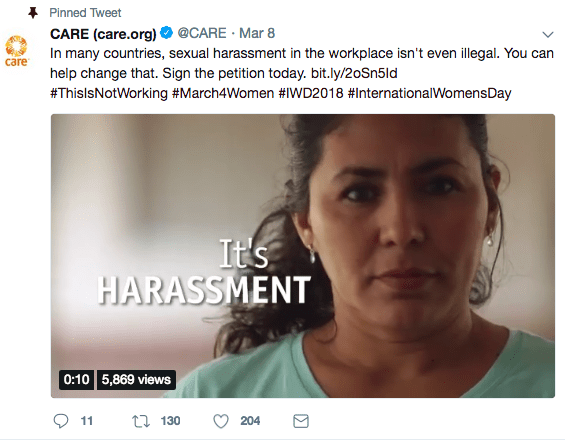
4. Focus on getting retweeted.
78% of engagement with an organization’s tweets is through retweets. For this reason, have most of your tweets designed to be ‘retweetable’.
What does this mean?
- Insert links – People are more likely to retweet informational content than ‘conversational’ tweets. Link to your own content or other reputable content and news sources.
- Ask for retweets – It was shown that when followers are directly asked to retweet, the retweet rate is 23x higher than usual.
- Retweet others – By retweeting content from organizations that you respect and value, you will increase the chances of them retweeting yours.
Here are a couple of other tweets that can help increase your Twitter following, retweets, and engagement:
- Retweet compelling messages or influential followers that mention your handle.
- @ tag and give credit to sources for whatever you post that is not your own content.
- Favorite all mentions of your handle.
- Thank users when they begin following you.
- Respond in a timely manner (within 24h) to users who tweet directly at your organization.
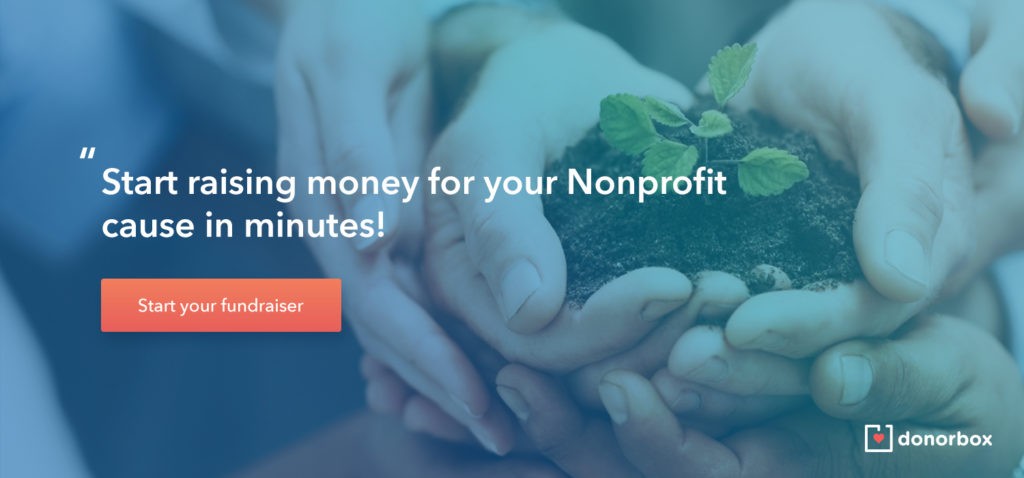
5. Think about your visuals.
Although Twitter is not as visual as Instagram or even Facebook, it’s still important to give some thought to your visuals.
Occasionally posting tweets that include images can boost your engagement rate.
Before using an image in a tweet, make sure the image is the right size for Twitter. The ideal image size for uploaded images on Twitter is 525 x 262 pixels. This size ensures that there is no cropping of your uploaded images on both the desktop and mobile versions of Twitter. Cropped images receive significantly fewer retweets.
Quotes and statistics generally do very well on Twitter. Consider creating your own images with quotes and statistics. You don’t need a professional graphic designer for this (although that wouldn’t hurt). There are tons of tools out there that you can use to create images for your social media (e.g. Canva).
Images can also be extensions of your tweets when you’ve run out of characters. Adding text to the images allows you to say more. Unless you’re driving traffic to a specific page, you should use images on tweets as much as possible to amplify your message.
Bonus points: Embed your logo on your images so that when your tweets are retweeted, more individuals will start to recognize your logo and associate you with your mission.
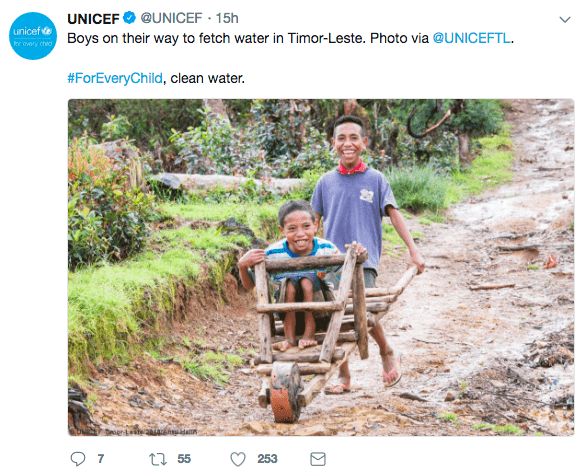
6. Curate and share content created by others.
Many nonprofits shy away from this tactic, but the truth is that very few nonprofits create enough high-quality content fast enough to be able to tweet exclusively their own content.
Therefore, curating and then sharing content created by others is a more viable and feasible Twitter strategy. Naturally, you shouldn’t share just any content purely to meet the daily quota of tweets. The ‘golden rule’ is to share that content that you would have written yourself and that you can stand behind.
A nonprofit must tweet or retweet at least twice daily to gain traction on Twitter.
If you want to run a successful Twitter account, you will have a good mix and balance of different tweet types, leaning more towards original content.
Below @WWF retweeted @UNEnvironment. The tweet they retweeted is relevant to their own cause.
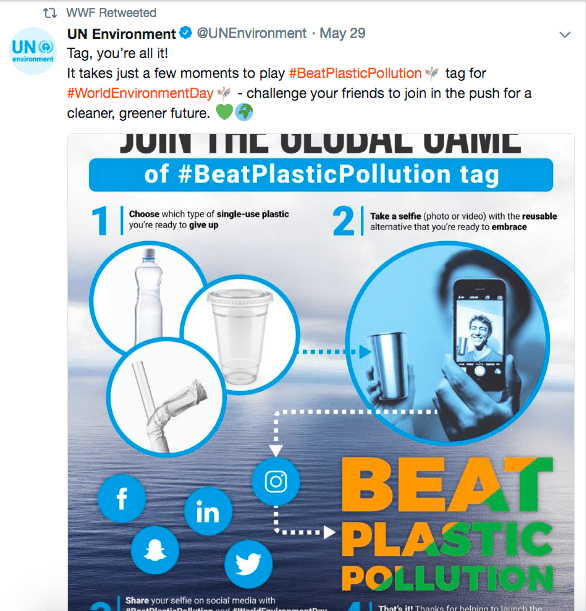
7. Focus on engagement.
There is a lot to engagement, but here are a couple of best practices:
This can be hard for nonprofit organizations because they represent many different people and because their Twitter account is sometimes managed by more than one person. A good rule of thumb is to review your mission statement, your values, and any brand/voice guidelines you might have created before and then go from there.
People generally respond to more ‘human’ voices that convey an emotion. Try to stay away from overly formal language.
In addition to adding links or images to your tweets, try using memes, gifs, or videos. Don’t be afraid to test out a number of different things until you find what works for you.
Cover news and events relevant to your nonprofit’s mission. Offer accurate information and a unique perspective.
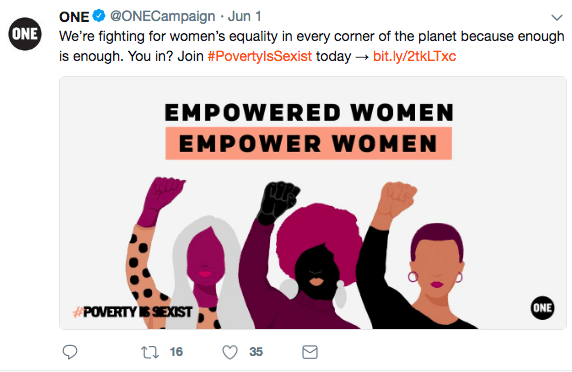
8. Interact, interact, interact.
Twitter is one of the best platforms for you to interact with your supporters. Don’t miss out on this opportunity.
Here are a couple of great ways in which you can interact with your followers beyond ‘favoriting’ their mentions of your handle and beyond responding to them.
8.1. Organize live chats
Live chats are a great way to interact with your audience. They are usually scheduled to last an hour and promoted at least a week in advance. Users interact by following and using the same hashtag. To run a successful live chat, invite several guests (ideally experts or influencers), prepare a couple of questions and share them in advance with your guests.
8.2. Organize live-tweeting sessions
Organizations usually organize live-tweeting sessions during their own events or when someone from their organization is attending a relevant event organized by someone else. Have at least one person tweeting from the event (ideally one more that interacts with followers). Make sure you’re all set up ahead of time. Create at least a dozen of tweets ahead of time, so you’re not stressed and confused during the event.
8.3. Account Takeovers
Takeovers are a fun and creative way to increase interaction and engagement. The process lets you invite someone to take care of your profile/account for a short period of time, usually 24 hours. Ideally, you would invite an influencer to manage your account for the day, so they can promote it to their network too.
8.4. Write specific thank you messages
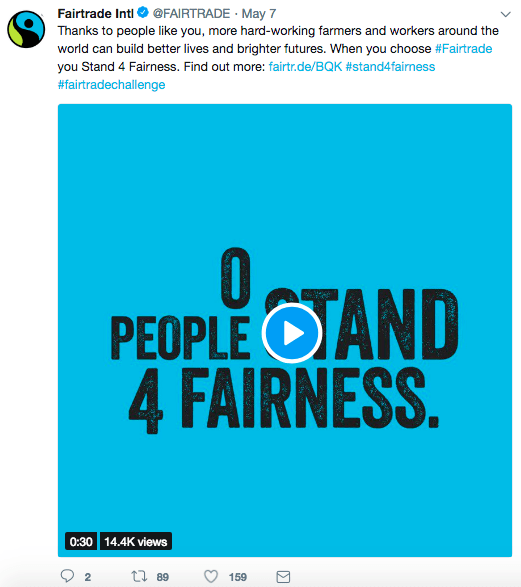
Compose tweets specifically mentioning a supporter/donor along with their twitter handles during online fundraising efforts. More likely than not they’ll retweet you and expand your campaign’s reach. It’s also a great relationship building and donor retention strategy.
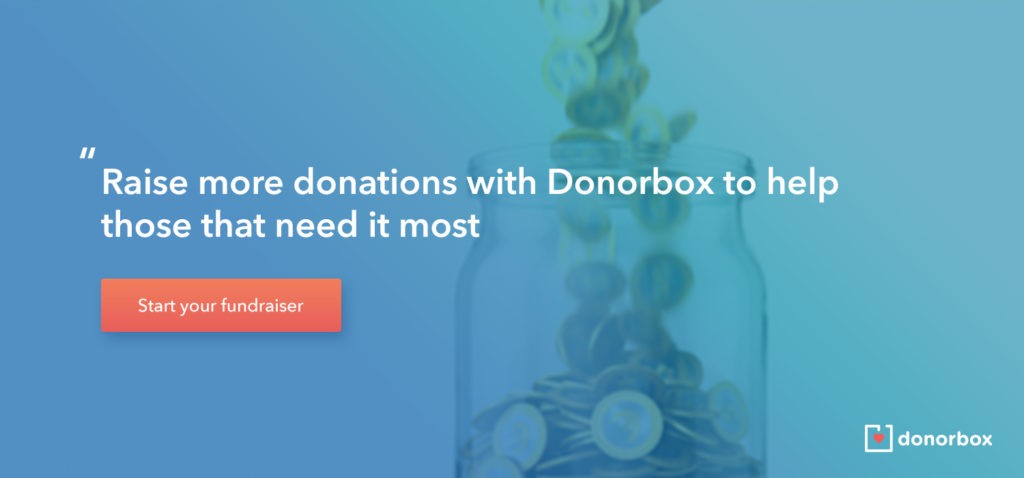
9. Don’t be afraid to use tools.
There are a lot of tools out there, many of them free, that can help you successfully run your Twitter account and achieve your marketing goals.
Using tools and technologies can help simplify your social media management, save time and efforts, and boost your results.
Here are only a couple of our favorites:
1. Buffer
Buffer is not specific to Twitter, but it’s a great social media management tool that allows you to craft the perfect updates, as well as schedule and share posts throughout the day. It’s super easy to use a tool, and includes detailed analytics so you know what’s working where, why and when to analyze the performance of your posts.
2. Crowdfire
Crowdfire allows you to set up automated follower messages which send as soon as a new follower joins your ranks. This helps with relationship building and growing your follower count.
3. Tweepi
Tweepi connects with your Twitter account to let you see the follow ratio of every person you currently follow so you can choose who is worth keeping on your following list and remove those who provide no value to you.
4. Tweetdeck
Tweetdeck, now owned by Twitter, allows you to tweet, reply, retweet, favorite, send Direct Messages and manage and monitor multiple accounts and streams, all in one single interface.
These are only a few tools in the sea of amazing technologies being developed every day. Don’t be afraid to use them to utilize the full potential of Twitter.
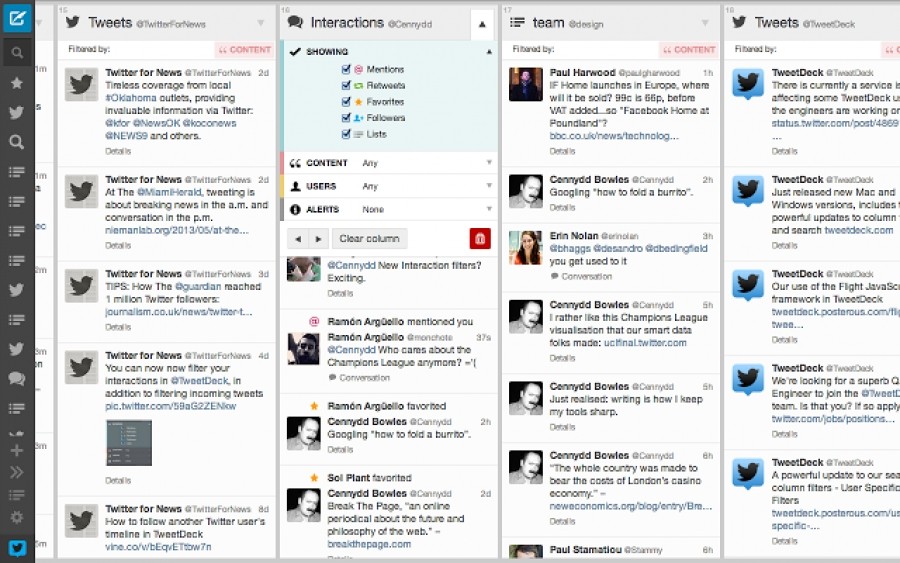
10. Get to know your Twitter Analytics Dashboard.
What works for one nonprofit doesn’t necessarily work for another one. This is why it’s important to continuously evaluate the effectiveness of your Twitter efforts.
Spend time on your Twitter dashboard weekly trying to better understand your retweet, click-through, and impression rates. By doing this, you will probably notice patterns: What content works best for your audience? Which one doesn’t?
Here are some questions you can ask yourself: How often do new people follow you? How often do others mention you Are others retweeting your tweets? How many of your followers represent your target audience? What’s the percentage of original content?
This helps you make decisions about what you create and share. The more frequently you do it, the faster you can make decisions. Be sure to regularly visit your Twitter Analytics page so you monitor the health of your account and use the metrics to adjust and perfect your strategy.

Conclusion
Social media has rapidly grown from being “something millennials spend their time doing” to an essential component of any nonprofit’s marketing strategy.
Many nonprofits make the mistake of starting to be active on social media platforms before taking the time to understand their ins and outs, before defining a strategy, and setting goals.
Sometimes organizations also forget that social media platforms are not ‘promotional’ platforms. They were primarily created to facilitate conversation, connection, and interaction. This is what should guide your activities, especially on Twitter – which is very conversation-focused. This doesn’t mean Twitter can’t be an amazing fundraising tool, but that you should establish the balance between fundraising asks and providing value to your followers.
Good luck becoming a Twitter star!
For more nonprofit tips, visit our nonprofit blog.
